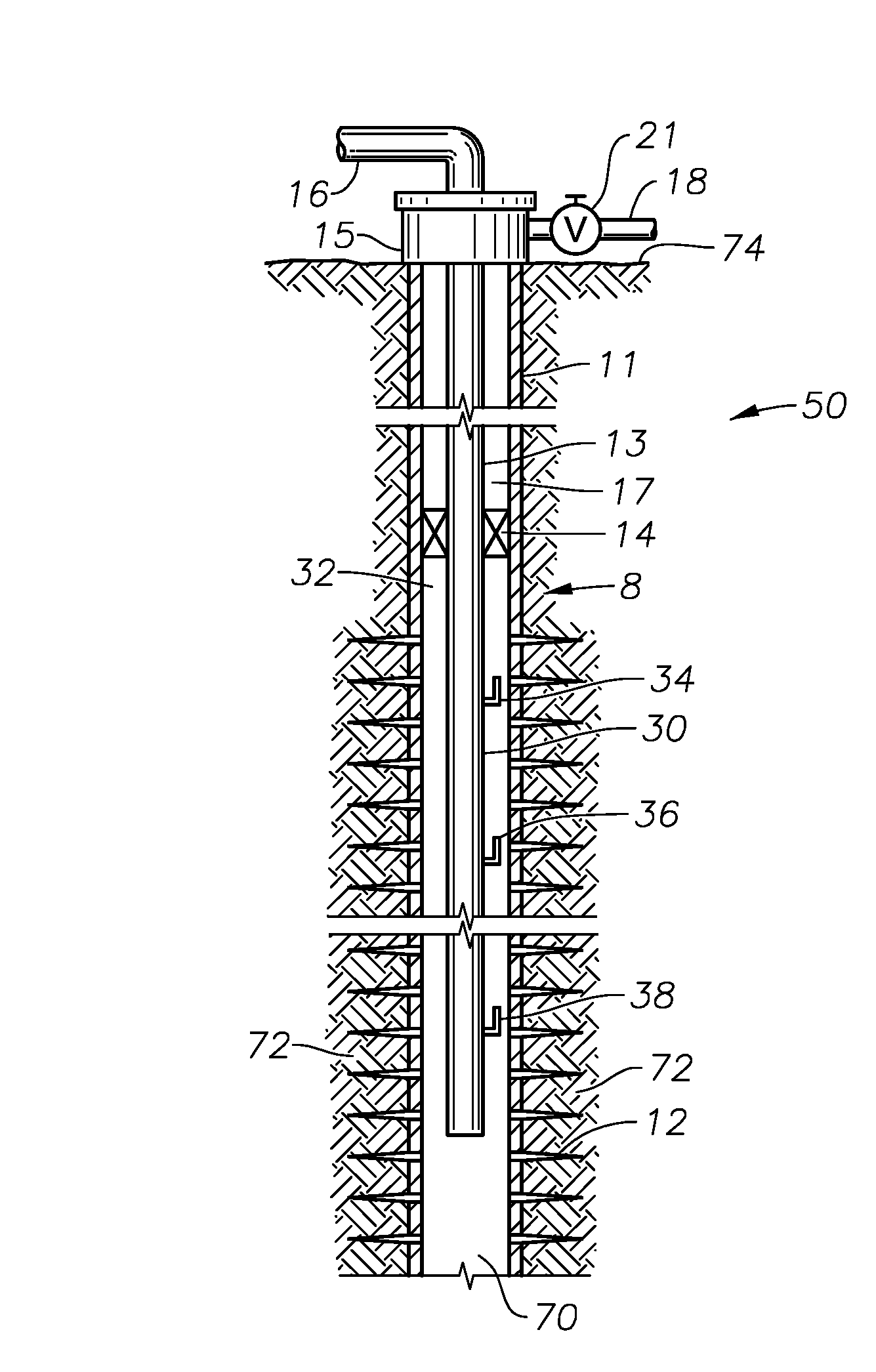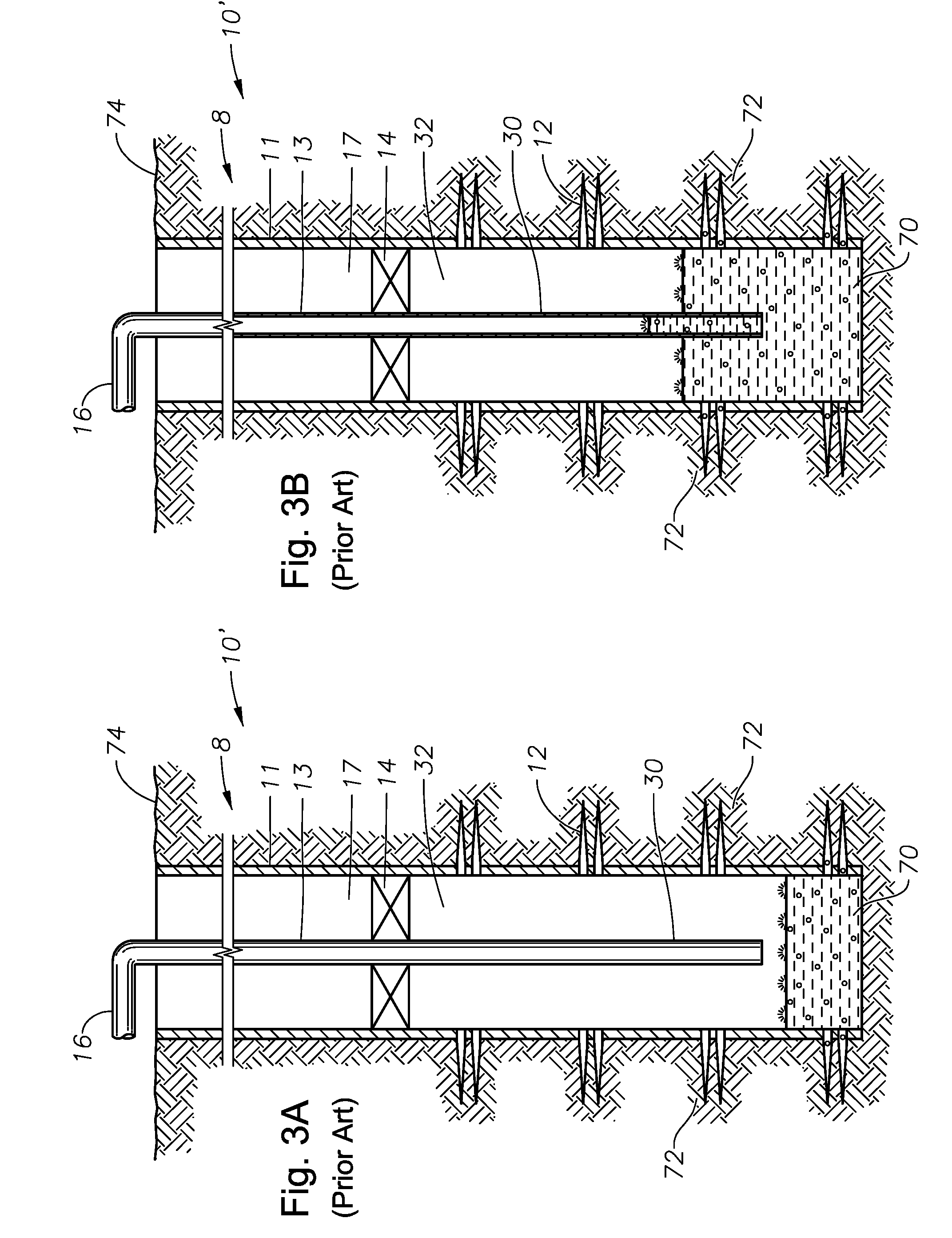Gas well de-watering apparatus and method
a technology of gas wells and dewatering equipment, which is applied in the direction of fluid removal, non-positive displacement pumps, borehole/well accessories, etc., can solve the problems of insufficient pressure to produce to the surface, the level of accumulating liquids begins to rise, etc., and achieves the effect of reducing the density of production fluids and reducing tubing pressur
- Summary
- Abstract
- Description
- Claims
- Application Information
AI Technical Summary
Benefits of technology
Problems solved by technology
Method used
Image
Examples
Embodiment Construction
[0027]The preferred embodiment of the invention alleviates one or more of the deficiencies described in the prior art and incorporates one or more of the objects previously identified. Referring now to the drawings, FIG. 1 illustrates a prior art well arrangement 10 employing artificial gas-lift technologies. A well bore 8 is lined with well casing 11 that, during well completion is perforated at 12 so that oil, gas, and other formation fluids from a subsurface earth production zone 72 can enter through casing 11. Production tubing string 13 extends from the surface down to packer 14, which is set above perforations 12 so that the oil, gas, and other formation fluids must flow up tubing string 13 to the surface 74, through casing head 15 and into production line 16.
[0028]A series of spaced pressure regulating valves 19, 20 are mounted on the tubing string 13 above packer 14 using conventional mandrels 6, with the lowermost pressure regulating valve 20 being arranged to control the i...
PUM
 Login to View More
Login to View More Abstract
Description
Claims
Application Information
 Login to View More
Login to View More - R&D
- Intellectual Property
- Life Sciences
- Materials
- Tech Scout
- Unparalleled Data Quality
- Higher Quality Content
- 60% Fewer Hallucinations
Browse by: Latest US Patents, China's latest patents, Technical Efficacy Thesaurus, Application Domain, Technology Topic, Popular Technical Reports.
© 2025 PatSnap. All rights reserved.Legal|Privacy policy|Modern Slavery Act Transparency Statement|Sitemap|About US| Contact US: help@patsnap.com



